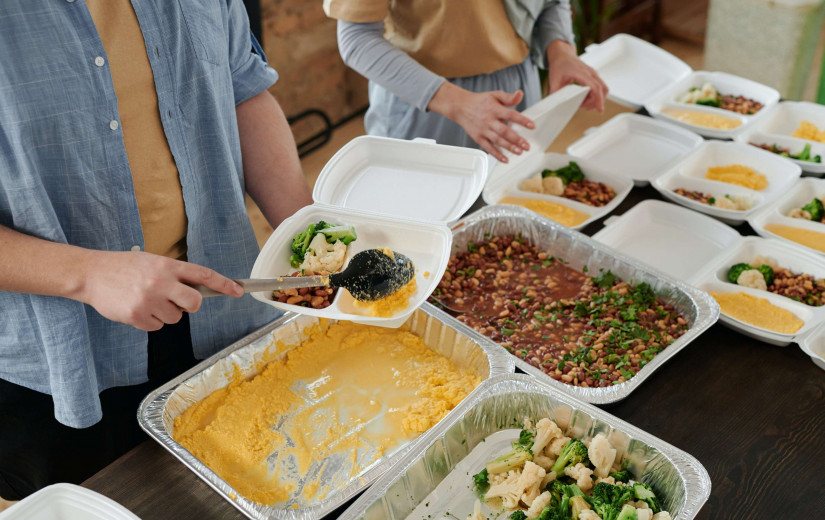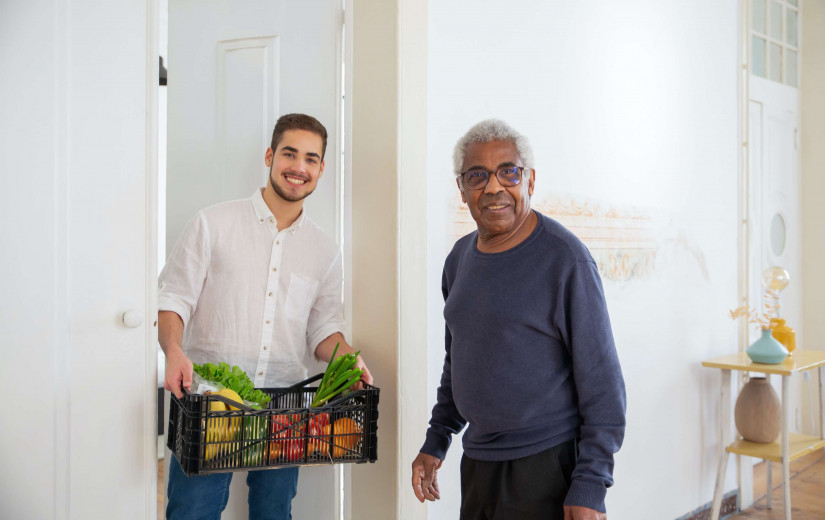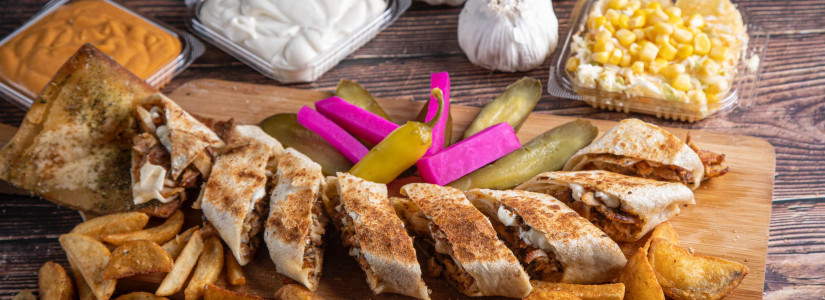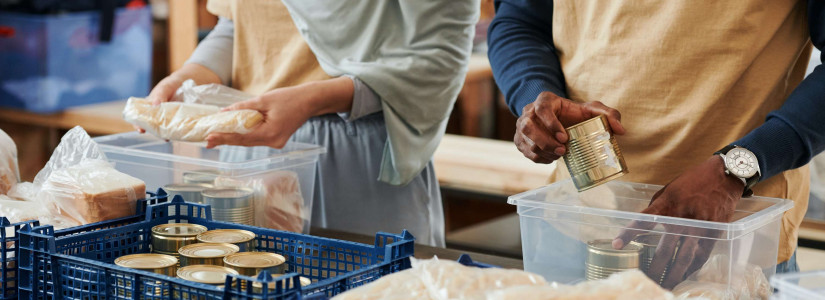Facts about SNAP Food Benefits
Millions of men and women in the United States are currently receiving benefits under SNAP, the Supplemental Nutrition Assistance Program. This program is considered a safety net for those who need assistance buying healthy food. The Food and Nutrition Service governs this program by working alongside local and state agencies to make sure that people with limited income still have access to groceries.
How the Food Assistance Program Came About
During the Great Depression, around 1933, the program was known as the Federal Surplus Relief Corporation. The government issued orange stamps that could be purchased. The orange stamps were equal to what the shopper paid in food. A dollar's worth of the orange stamps would give you .50 cents back in blue ones. The purchaser could use the orange stamps for any type of food item, but the blue ones had restrictions. They could be used for surplus items, such as beans, eggs, flour, vegetables, and meal.
The Secretary of Agriculture, Henry Wallace, was the brains behind the program. It became the New Deal Program in 1939 when President Franklin D. Roosevelt became involved. When the economy boomed in 1943, the program ended temporarily. It was reintroduced by President John F. Kennedy in 1961 in order to help people in pilot states. President Lyndon Johnson accepted the program officially as The Great Society Program until it was referred to as the Food Stamp Act. By now, it was being funded by the Federal Government. The program itself has gone through updates and changes over the years, but the original concept was born in 1933.
Income Eligibility
At the moment, over 45 million citizens use the SNAP program in the United States. Users must show that their income is below a certain guideline in order to be eligible for SNAP. There are six areas that must be passed in order for the applicant to be approved. Countable resources cannot be more than $2,250 for one family. This amount goes up to $3,250 if the person is disabled or elderly. An applicant is allowed to own one vehicle, without a lien, as long as the value is below $4,650.
Income is looked at next. To be eligible, a family must be able to pass two tests in the net and gross income area. A family will need to be at the 100-130 percent range of the federal poverty guidelines. Alaska and Hawaii do have higher guidelines than the rest of the states. A family of four may receive up to a maximum of $649 in food benefits. A one-person family can receive no more than $194 a month. Those who receive SNAP benefits must have a job and work for 20 hours a week in order to pay for their benefits. Their local center will help them find volunteer positions. A letter from their doctor stating that they cannot work is the only way they will be excused from working for benefits. Another exception is if they are disabled or over 60 years old.
How to Apply for Benefits
Every area offers an office that one can apply for SNAP benefits. While you can go directly to the office to apply, there are online screening tools that are helpful in finding out if you will be eligible for benefits. It can save time and effort to pre-screen first to make sure your family is eligible. The application process can also be completed online.
For emergency cases where the applicant shows they are only making $150 or less per month or are a migrant worker with less than $100 in their bank, expedited benefits will be given out right away. In most cases, benefits are issued at some point within 30 days of the completed application.
Using SNAP to Buy Groceries
Most foods are still allowed to be purchased using SNAP benefits, even soda and sugary snacks. You cannot buy non-grocery items, such as toiletries, soap, pet food, or paper products. Only food items are acceptable purchases.
At the moment, there is no limit on the amount of time a family is allowed to receive benefits. However, an able-bodied adult who does not have dependents will only receive benefits for three months every three years.
How the Food Assistance Program Came About
During the Great Depression, around 1933, the program was known as the Federal Surplus Relief Corporation. The government issued orange stamps that could be purchased. The orange stamps were equal to what the shopper paid in food. A dollar's worth of the orange stamps would give you .50 cents back in blue ones. The purchaser could use the orange stamps for any type of food item, but the blue ones had restrictions. They could be used for surplus items, such as beans, eggs, flour, vegetables, and meal.
The Secretary of Agriculture, Henry Wallace, was the brains behind the program. It became the New Deal Program in 1939 when President Franklin D. Roosevelt became involved. When the economy boomed in 1943, the program ended temporarily. It was reintroduced by President John F. Kennedy in 1961 in order to help people in pilot states. President Lyndon Johnson accepted the program officially as The Great Society Program until it was referred to as the Food Stamp Act. By now, it was being funded by the Federal Government. The program itself has gone through updates and changes over the years, but the original concept was born in 1933.
Income Eligibility
At the moment, over 45 million citizens use the SNAP program in the United States. Users must show that their income is below a certain guideline in order to be eligible for SNAP. There are six areas that must be passed in order for the applicant to be approved. Countable resources cannot be more than $2,250 for one family. This amount goes up to $3,250 if the person is disabled or elderly. An applicant is allowed to own one vehicle, without a lien, as long as the value is below $4,650.
Income is looked at next. To be eligible, a family must be able to pass two tests in the net and gross income area. A family will need to be at the 100-130 percent range of the federal poverty guidelines. Alaska and Hawaii do have higher guidelines than the rest of the states. A family of four may receive up to a maximum of $649 in food benefits. A one-person family can receive no more than $194 a month. Those who receive SNAP benefits must have a job and work for 20 hours a week in order to pay for their benefits. Their local center will help them find volunteer positions. A letter from their doctor stating that they cannot work is the only way they will be excused from working for benefits. Another exception is if they are disabled or over 60 years old.
How to Apply for Benefits
Every area offers an office that one can apply for SNAP benefits. While you can go directly to the office to apply, there are online screening tools that are helpful in finding out if you will be eligible for benefits. It can save time and effort to pre-screen first to make sure your family is eligible. The application process can also be completed online.
For emergency cases where the applicant shows they are only making $150 or less per month or are a migrant worker with less than $100 in their bank, expedited benefits will be given out right away. In most cases, benefits are issued at some point within 30 days of the completed application.
Using SNAP to Buy Groceries
Most foods are still allowed to be purchased using SNAP benefits, even soda and sugary snacks. You cannot buy non-grocery items, such as toiletries, soap, pet food, or paper products. Only food items are acceptable purchases.
At the moment, there is no limit on the amount of time a family is allowed to receive benefits. However, an able-bodied adult who does not have dependents will only receive benefits for three months every three years.

















